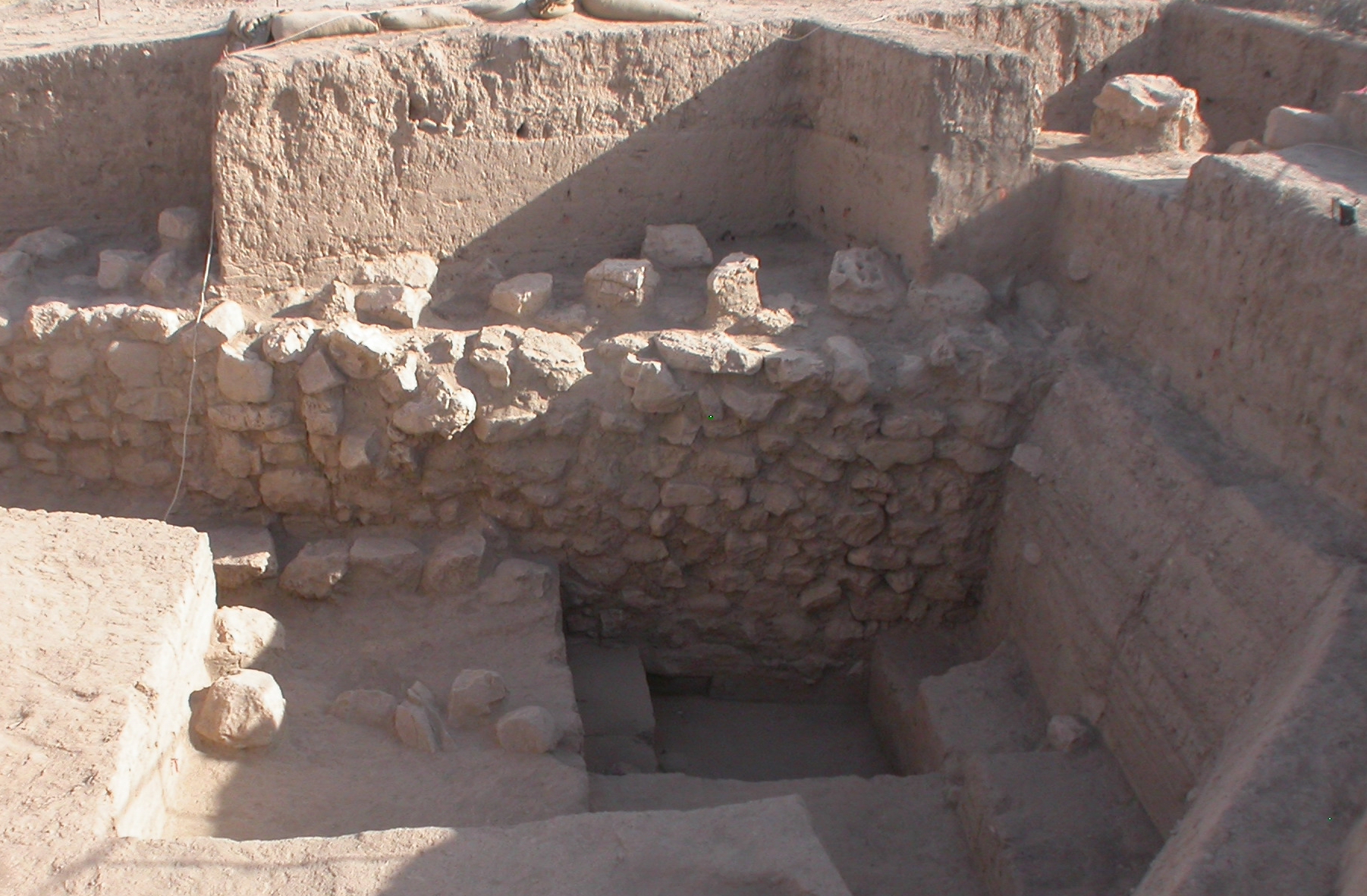.bk J01
.fl U125gB.J
.fd notes abut incised sherd J1q1211.1
.rd T818
.ri gB
q 1211.1
nt While there are other sherds from a variety of different strata with unique incised designs, i.e., designs that are not repeated to form a running pattern on the surface of the vessel, the A16q1211.1 sherd from J1 has four peculiarities. First, the lines are quite straight, as if they were not obtained by dragging the tip of a stylus-like implement along the surface of the sherd, but rather by depressing the same stylus along its side (this implies that the sign was impressed on the wet clay before the vessel was fired, thus arguing agaist a possible identification as an ostracon). Second, the incision is a single line, whereas many of the other sherds show a double line, as if the implement used were like a straw with two edges. Third, the incision is very shallow, though it is quite sharply defined. Fourth, the design may perhaps be seen as being representational in nature, as a schematic bull's head.
We have routinely interpreted these incised designs as either simple decorative elements, or as potter's marks. The J1 sherd, however, because of the peculiarities just noted, raises the question as to whether it may lend itself to a different interpretation. Placed vertically with the acute angle at the bottom, the sign looks like a bucranium. Placed on its side, with the acute angle on the left, the sign looks like the aliph sign of the early north Semitic alphabets. There is also an additional stroke that may represent a second sign in a presumed string of signs.
Q4 There is a curious body sherd from Chuera with a string of four incised signs that appear to render four characters in a Northwest Semitic script. It came from the sherd yard of the Antentempel level, and it is described as being identical in ware to those of that level. Analyzed by Abu-Assaf and Röllig as epigraphically plausible, it cannot possibly serve as evidence for alphabetic writing in the third millennium.
.rd U125
Q4 Six sherds from Kamid el-Loz are incised with a sign that is very close in shape to the one on the J1 sherd. They are reproduced below from the drawings in the original publication (pp. 27-28, see also pp. 24-25), the numbers referring to the number of the "ostracon" as given ibidem. Mansfeld stresses the fact that the Late Bronze ostraca from Kamid el-Loz are the earliest known evidence of an alphabetic script, ostraca 1 and 2 from the citadel being slightly older than 3-8 from the temple (stratum 3b), antedating the alphabetic cuneiform of Ugarit (p. 38). He also points to the fact that the Aleph sign is surprisingly well developed (p. 39).
Mansfeld reads the parallel lines incised next to the characters as numeric notation (p. 31).











